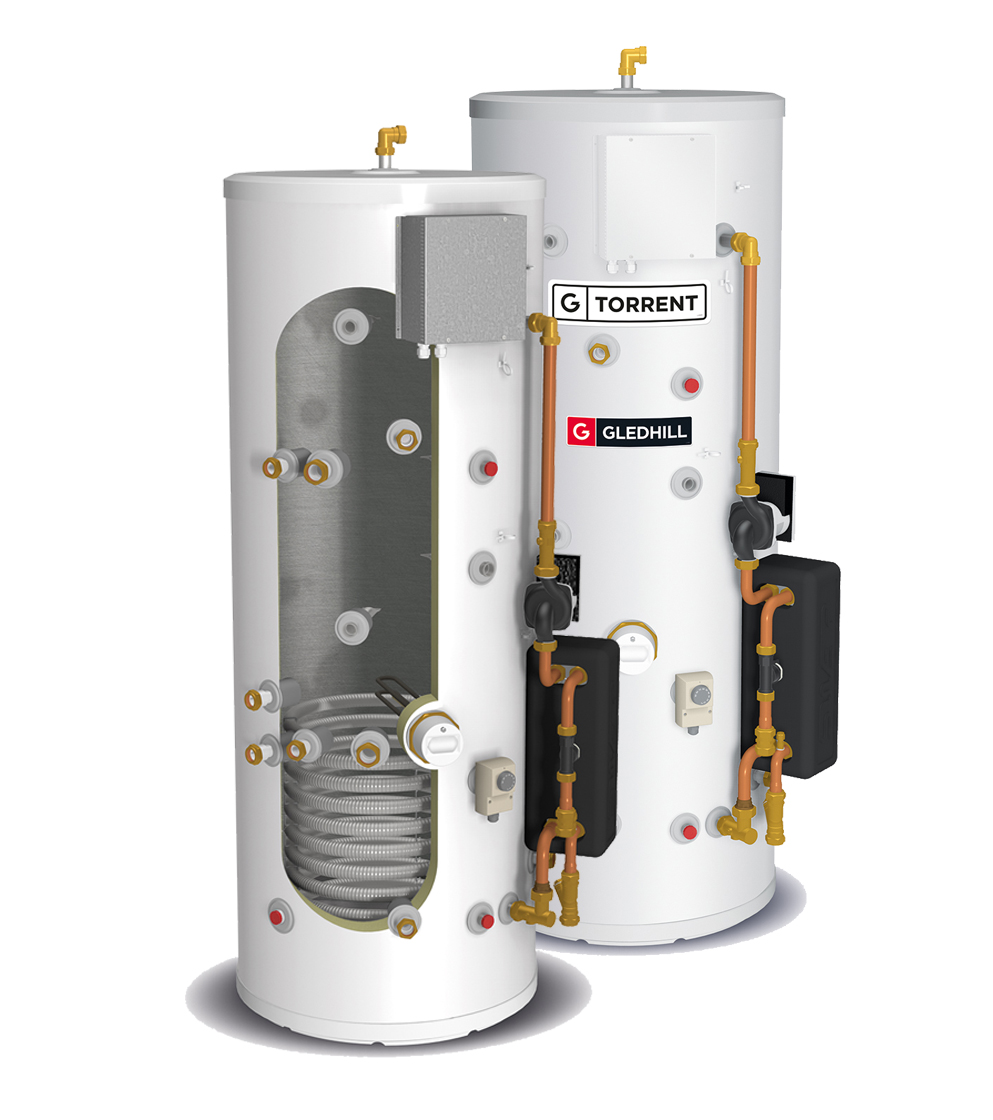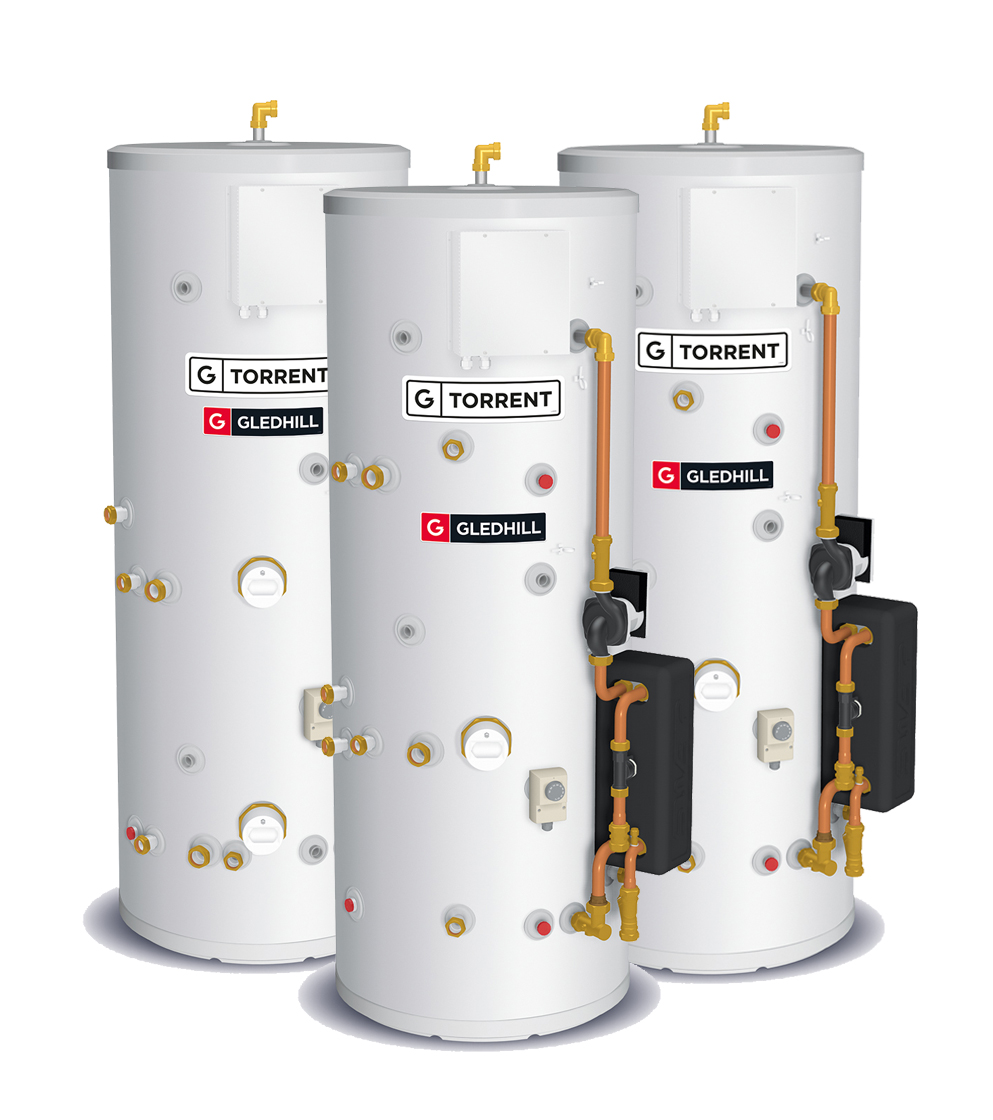Thermal stores provide the perfect solution for combining heat sources to maximise energy efficiency and delivering water and space heating. Here’s five things installers should know about thermal stores.
1) A thermal store works at mains pressure
A thermal store is a vessel for storing and managing heat until it is needed. It differs from a conventional hot water cylinder as the stored water is not fed to the taps directly from the thermal store. Instead, it is heated up by passing through a plate heat exchanger that transfers heat from the thermal store water to the mains or tap water. Heat exchangers, especially flat-plate heat exchangers, have the ability to transfer a lot of heat in a short time – allowing householders to take a mains pressure shower or fill a bath very quickly.
A thermal store may contain one or more heat exchangers, in the form of internal coiled pipes or external flat-plate heat exchangers. It may also include an electrical heating element, such as an immersion heater.
Thermal stores can provide space heating and mains pressure hot water or hot water only.
2) A thermal store can use different fuel sources
Purpose-built thermal stores are designed and sized to take inputs from a number of different heat sources. It might store heat from a wood-fuelled boiler, solar thermal or a conventional gas or oil boiler. If the homeowner wants to add a fuel source in the future it needs to be specified at time of ordering.
Solid fuel: A solid fuel appliance burning fuels such as wood, wood pellets and biomass (common biomass fuels include waste wheat, straw, nut shells and other fibrous material) are typically low grade, inherently unpredictable and are often available in plentiful supply. A thermal store provides the means to manage the time difference between when heat is available and when it is needed later for conversion into both hot water and heating.
Open vented thermal stores offer the householder the comfort and luxury of a pressure system with heat produced from solid fuel appliances, whilst providing a simple and inherently safe way to produce high performance mains pressure hot water.
The energy from the solid fuel appliance feeds into the thermal store which also provides the water that circulates around the heating system. This means that the energy available can be used to power the heating circuit and decrease the dependency on fossil fuel-based boilers, which will reduce household running costs.
It is very problematic to connect wood burning stoves or other uncontrolled heat sources to an unvented cylinder, and not easy to combine alternative energy heat sources to provide energy to the heating circuit, hence the unique advantages of a thermal store.
 Solar thermal: The energy produced from solar thermal can also be used to heat water via a thermal store. The thermal store utilises a high-efficiency solar coil to allow the homeowner to benefit from natural solar energy produced during the day. Once the solar energy available is insufficient to heat the store, it will revert to a conventional boiler as its primary heat source.
Solar thermal: The energy produced from solar thermal can also be used to heat water via a thermal store. The thermal store utilises a high-efficiency solar coil to allow the homeowner to benefit from natural solar energy produced during the day. Once the solar energy available is insufficient to heat the store, it will revert to a conventional boiler as its primary heat source.
The central heating circuit can be supplied directly from a sealed system boiler although an auxiliary heating circuit can be connected from the store in which case the solar will also provide an input to the auxiliary heating circuit.
3) A thermal store’s full potential is reached when fuel sources are combined
The full potential of a thermal store is achieved when it utilises a number of different heat inputs.
During the day the thermal store can utilise the heat from a high-efficiency solar thermal input to heat up the water in the store.
If the property has a wood burner, which is typically lit in the evening, this can also be connected to the system which will boost the temperature of the water in the thermal store generated by the solar energy during the day.
All of this can be backed up by a conventional boiler or an immersion heater.
And, for even greater energy efficiency, if a low carbon or renewable electricity source is available then this could be connected to the immersion element to provide heat input to the thermal store, decreasing the use of the fossil fuel boiler and hence reducing running costs.
4) A thermal store is a great off-grid solution

One area where thermal stores can be a particularly innovative solution is in off-grid properties with multiple heat sources, including electricity. The thermal store would only use mains electricity as a top-up, when the other sources weren’t providing enough energy, as necessary. By the same token, a thermal store can also reduce the reliance on oil or LPG.
5) A thermal store is easy to install and requires minimal maintenance
A thermal store can be situated virtually anywhere within the home as long as the header tank is higher than the radiators. There is no need for discharge pipework and virtually zero maintenance which makes them a great option for flats and retirement living. And, as there is no standing water there is no risk of Legionella or contamination.
Plus, installers do not need to have a G3 qualification to install a thermal store.
The latest thermal stores from Gledhill are engineered to combine energy efficiency with style. Manufactured from duplex stainless steel using precision engineering and with 50mm of insulation for improved heat loss ratings they are lightweight and easy to install.
